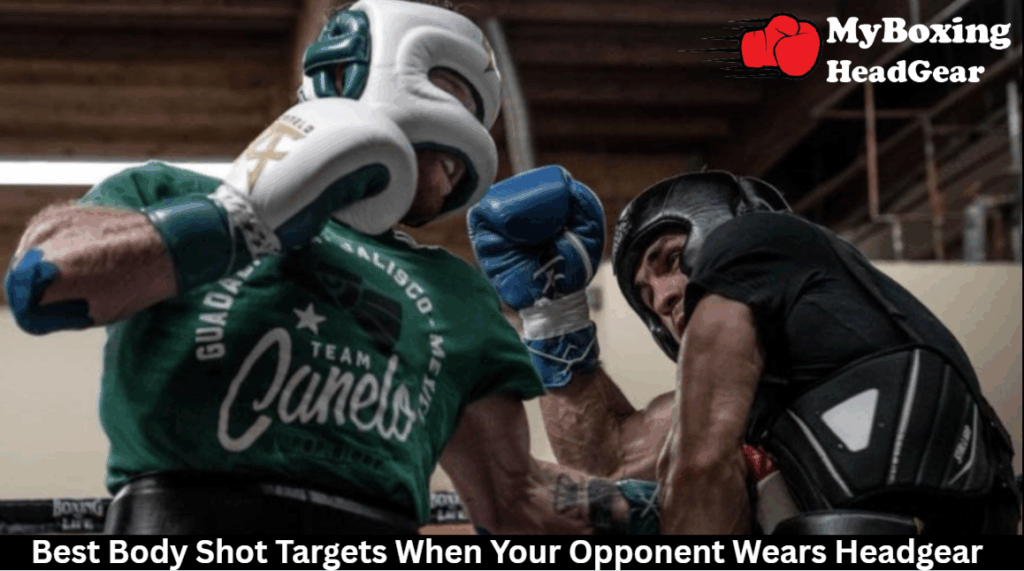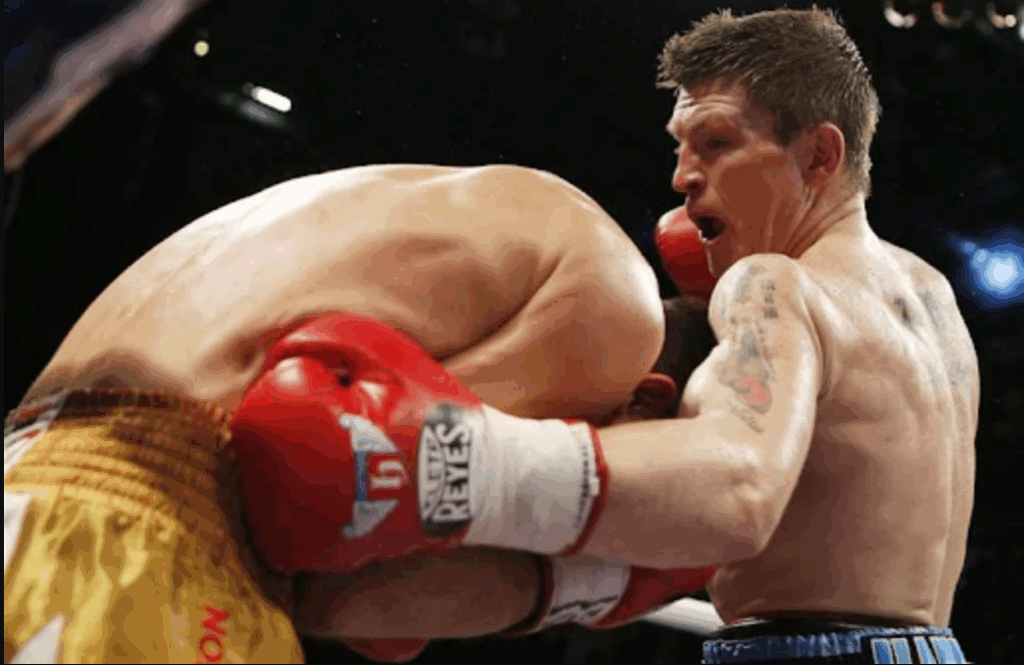When your opponent’s got headgear on, going for the head isn’t always worth the trouble. It covers the chin, and the face is harder to reach. But the body? That’s still wide open. Focus on spots like the liver, solar plexus, or the ribs. Hit those right, and you can take the wind out of them fast, even if you never touch the head.
These body shots score points, deplete your opponent’s energy, slow their motion, and open up chances for follow-up combinations.

Why Target the Body When Headgear is Involved
While headgear provides substantial protection for your opponent’s head, it creates a perfect opportunity to shift your focus downward. Padded headgear absorbs impact and diffuses the power of your strikes, making it harder to score meaningful points or create fight-ending damage up top.
A well-placed body shot, however, bypasses this protection entirely. Your opponent’s boxing defense might be solid above the shoulders, but many fighters neglect proper body protection. When you target the torso, you’ll find unpadded, sensitive areas that respond dramatically to clean shots.
Body work also accumulates damage over time, sapping your opponent’s energy, restricting breathing, and forcing their guard to drop. It creates openings for head shots later in the fight.

Top Vulnerable Body Shot Targets
Now that you understand why body shots are so effective against headgear-protected opponents, let’s focus on exactly where to aim. The liver, located on your opponent’s right side, is extremely sensitive to left hooks and can instantly sap their energy when struck cleanly.
The solar plexus, centered in the upper abdomen, creates a temporary breathing disruption when hit with straight punches. It’s an accessible target when your opponent raises their guard.
Don’t overlook the floating ribs, which respond painfully to hooks and angled uppercuts. Muscles do not protect the ribs and can quickly diminish your opponent’s offensive output.
The obliques and sides become particularly vulnerable during lateral movement, offering perfect openings when your opponent attempts to circle away from pressure.

Best Punches to Use Against a Protected Head
When facing an opponent with headgear, adapt your offensive strategy to maximize effectiveness. The left hook to the body becomes your primary weapon during inside exchanges, targeting the liver with devastating potential.
Your rear straight to the solar plexus works brilliantly after a feint or level change, allowing you to bypass their guard completely. Uppercuts to the sternum or under the guard require proper body mechanics. Pivot your back foot and transfer weight upward for maximum impact.
Don’t overlook the shoeshine combination. Rapid, alternating hooks to the midsection that overwhelm your opponent’s defensive capabilities. These combinations force them to drop their guard, creating openings elsewhere. Each punch type requires specific timing and setup, but mastering them will make headgear an inconvenience rather than protection.

How to Set Up Body Shots Effectively
Landing solid body shots is about setting traps and picking the perfect moment. Start by using high feints to get your opponent to lift their guard, which opens up the body underneath.
Work your angles. Stepping outside their lead foot gives you a cleaner path to the liver or ribs and makes it tougher for them to fire back. You’re in control, and they’re off balance.
Use your jab smartly, not just to score, but to disguise your level changes. A quick jab up top pulls their focus and hands upward, leaving their midsection wide open for the real damage.
If you’re facing an aggressive fighter, let them throw first. Draw their counters, then respond with devastating body work when they’re overextended and vulnerable.
Defensive Considerations When Aiming Low
Body shots create dangerous moments of vulnerability that skilled opponents will enthusiastically exploit if you’re not defensively sound. When targeting the body, never drop your lead hand. Maintain your guard position even as you commit to downstairs attacks.
After throwing body shots, reset your defensive posture immediately. Many fighters get caught with counters because they linger in compromised positions. Keep your chin tucked throughout the exchange, as body attacks naturally expose your head to uppercuts and hooks.
Use footwork defensively by pivoting away after landing your shot. It creates angles that make counterattacks difficult for your opponent. Remember that defensive considerations should never be secondary. A great body puncher stays protected while delivering punishment, making attacking downstairs both effective and safe.
Training Drills for Body Shot Precision and Timing
To develop devastating body shots, you’ll need dedicated training that replicates real fight conditions. Start with double-end bag work to master timing and angles. Focus on throwing hooks and straights that would land cleanly on liver or solar plexus targets.
Partner drills are essential for body shot precision. Have your training partner wear a belly pad while providing realistic movement and guard positions. Dedicate specific sparring rounds exclusively to bodywork, forcing you to find openings below the headgear.
Implement reaction drills where your coach calls out targets unpredictably. It improves your ability to shift between head and body attacks seamlessly. Remember to practice combination entries and exits, like jab-hook-pivot or feint-straight-roll, that protect you while delivering punishment below.
Frequently Asked Questions
How Should I Adjust My Footwork When Focusing on Body Shots?
When focusing on body shots, you’ll need to step slightly to the outside of your opponent’s foot, lower your level, and pivot after landing.
Does Conditioning My Own Body Help Absorb Return Body Shots?
Absolutely. When you strengthen your core muscles, you’ll better withstand return body shots. Regular ab workouts, medicine ball exercises, and dedicated torso conditioning develop the muscle armor needed to absorb punishing blows during exchanges.
How Do Judges Typically Score Body Shots Versus Head Shots?
Judges typically score clean, impactful body shots equally to head shots, but they’re often less visible. Make your body work obvious through your opponent’s reaction to guarantee proper scoring credit.
Should Body Shot Strategy Change Against Southpaw Opponents?
Yes, your body shot strategy must shift against southpaws. Target their right side liver with your right hand, adjust your angles of attack, and pay extra attention to foot positioning to avoid their power left.
Can Body Shots Effectively Set up Head Shots Despite Headgear Protection?
Yes, body shots absolutely set up head shots. When you attack the body, your opponent’s guard drops instinctively to protect it, creating openings upstairs even with headgear. It’s all about timing those shifts perfectly.




